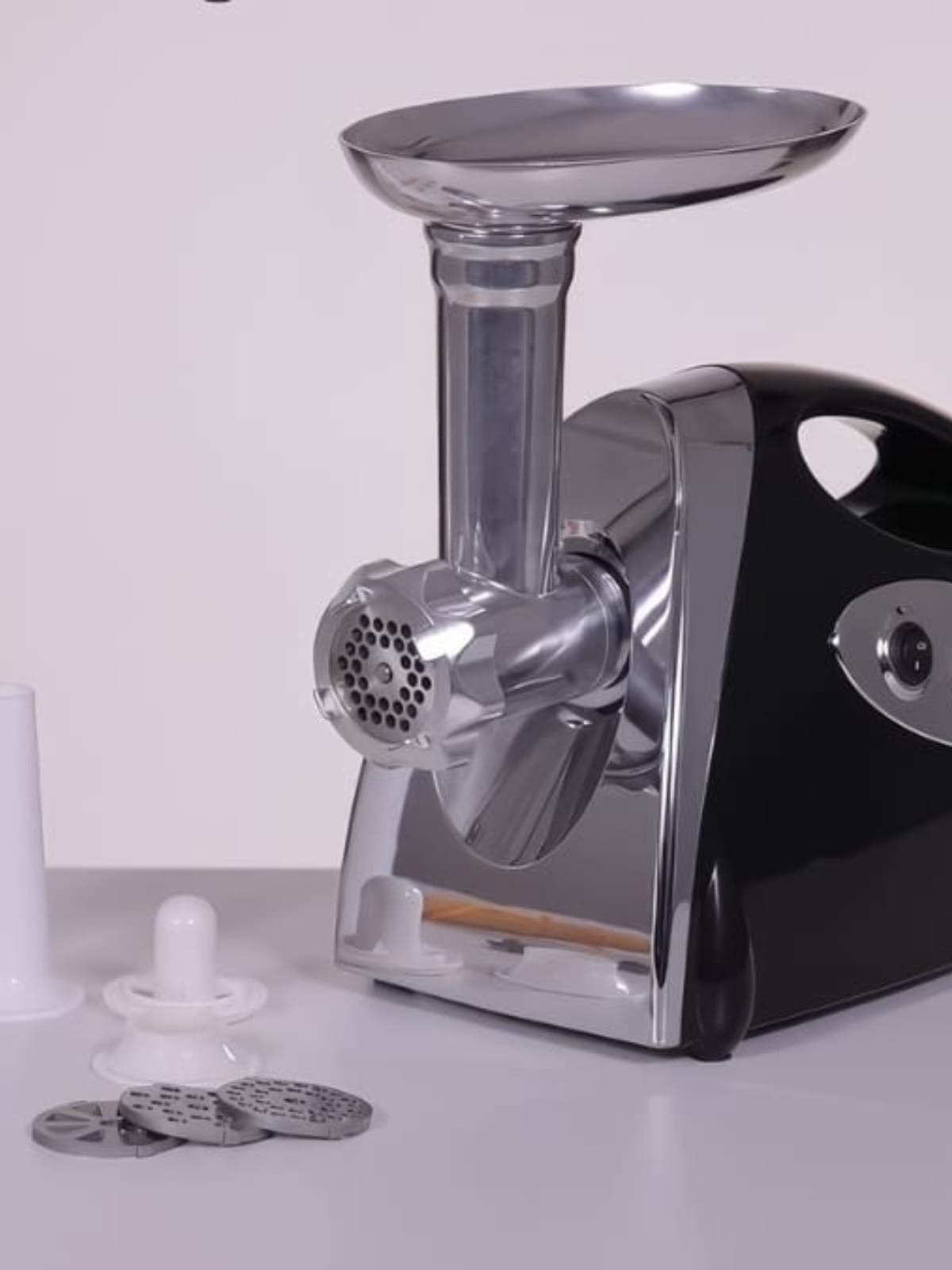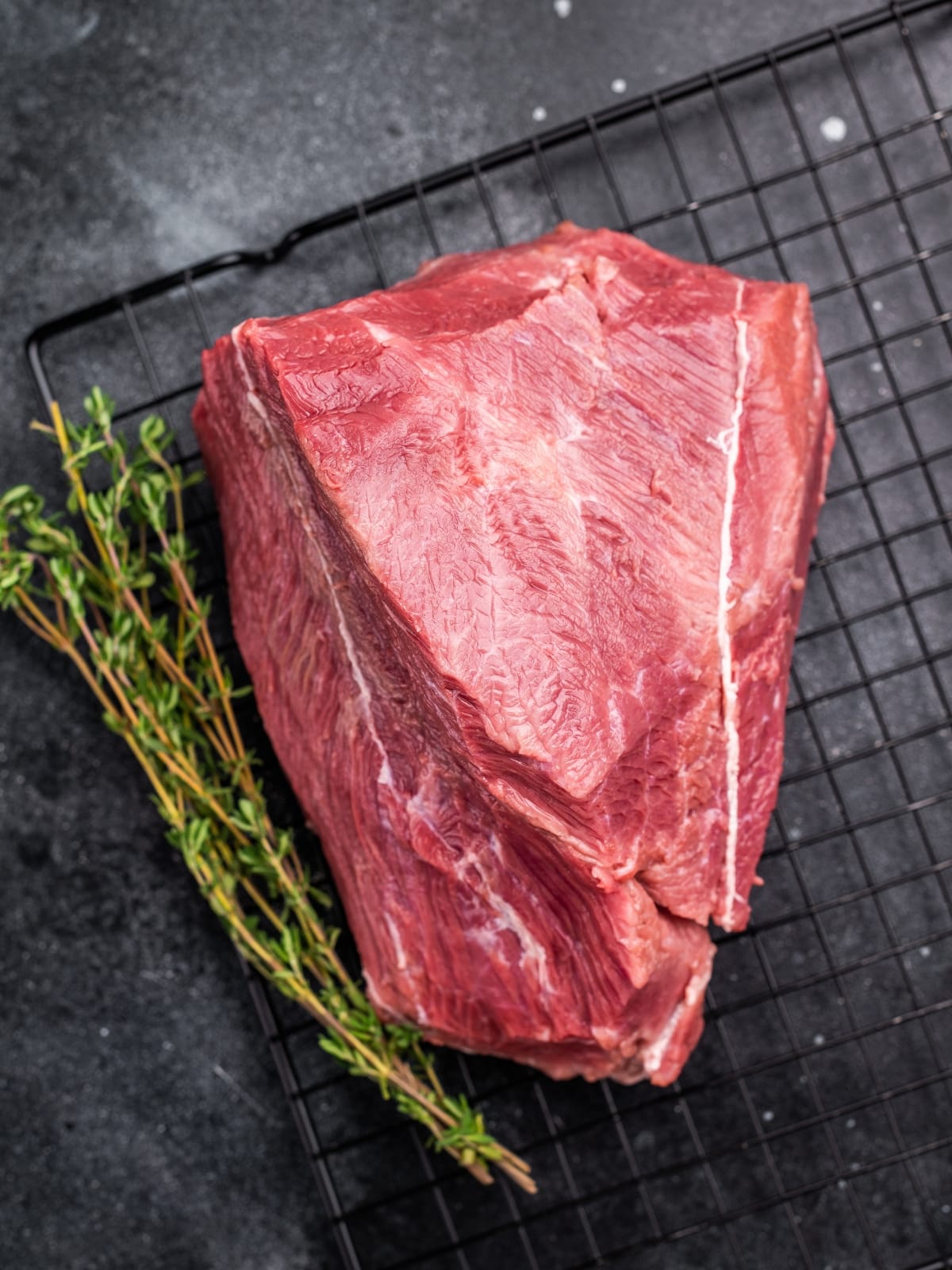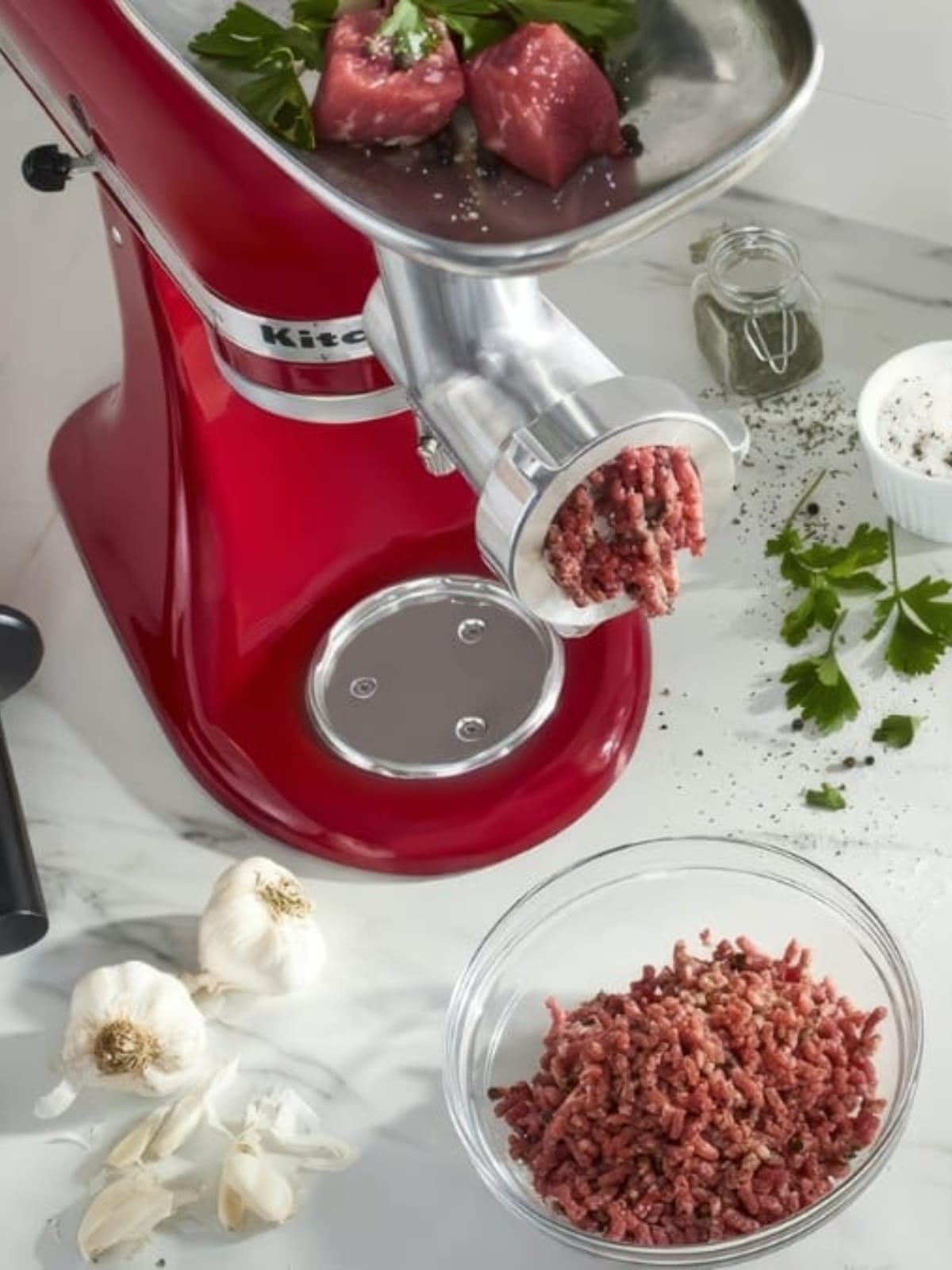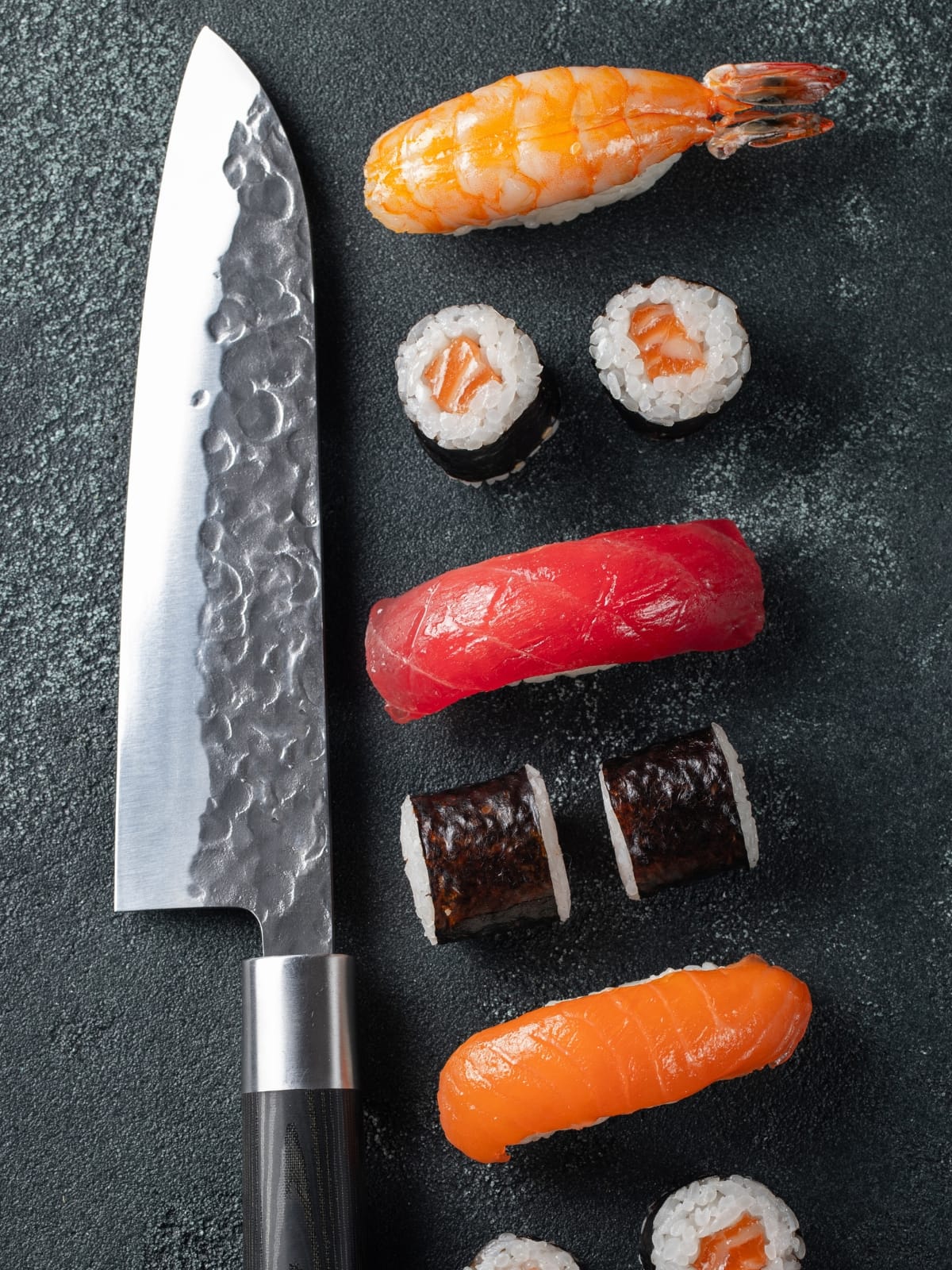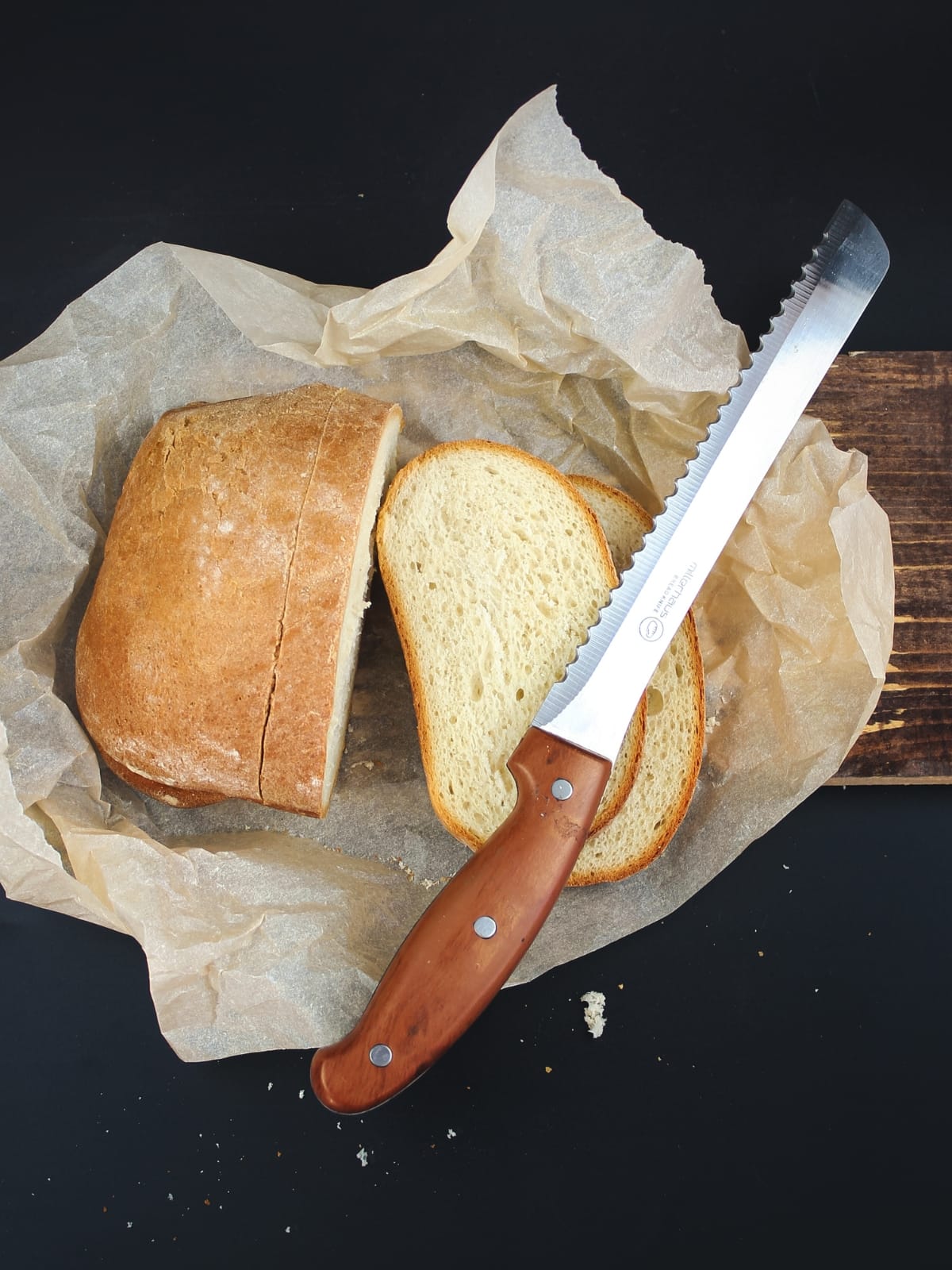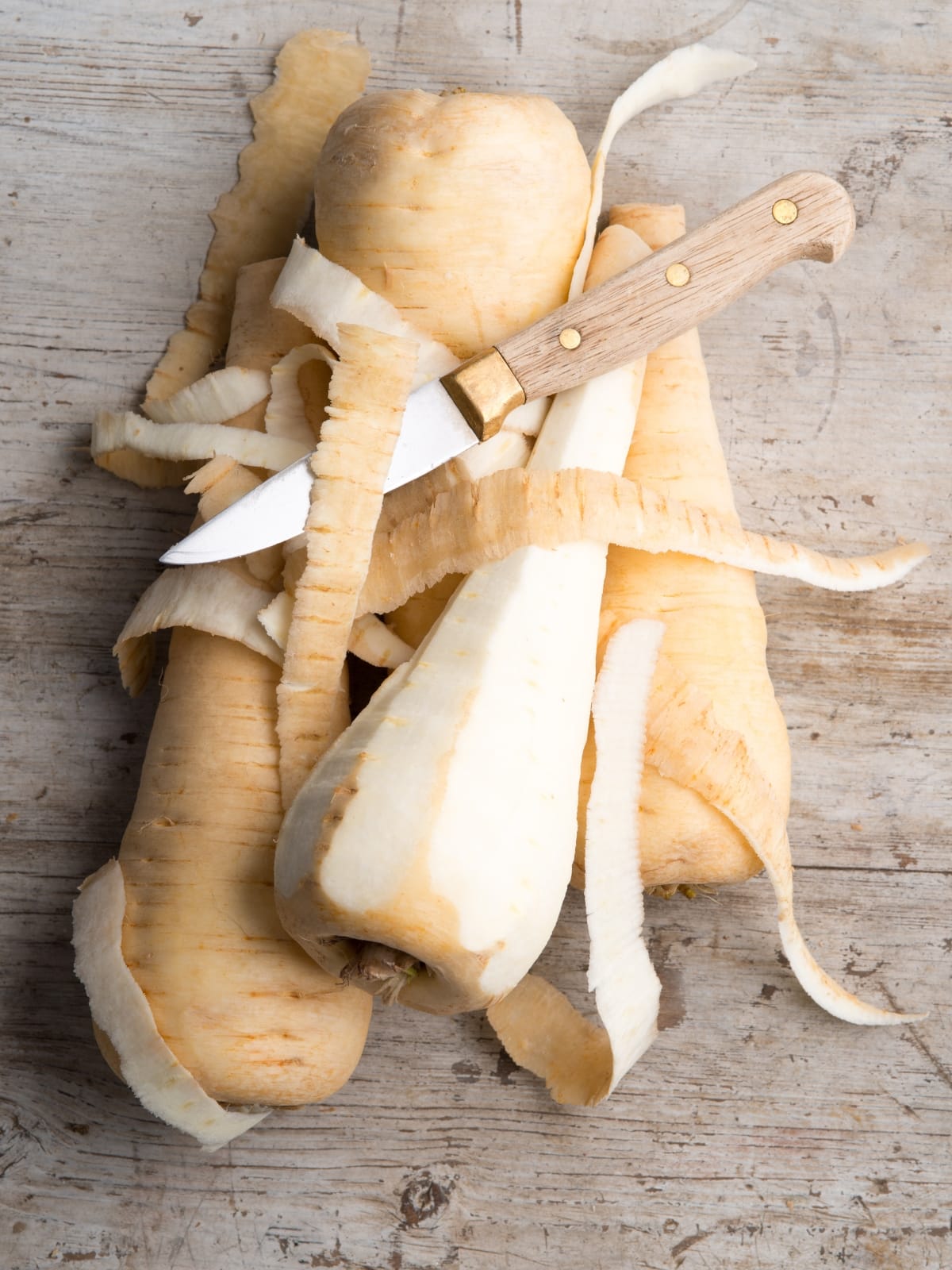Discover everything you need to know about full tang kitchen knives, from their superior construction to performance benefits. Learn why professional chefs prefer full tang knives and how this design feature significantly impacts your cooking experience, durability, and safety in the kitchen.
What Is a Full Tang in Kitchen Knives?
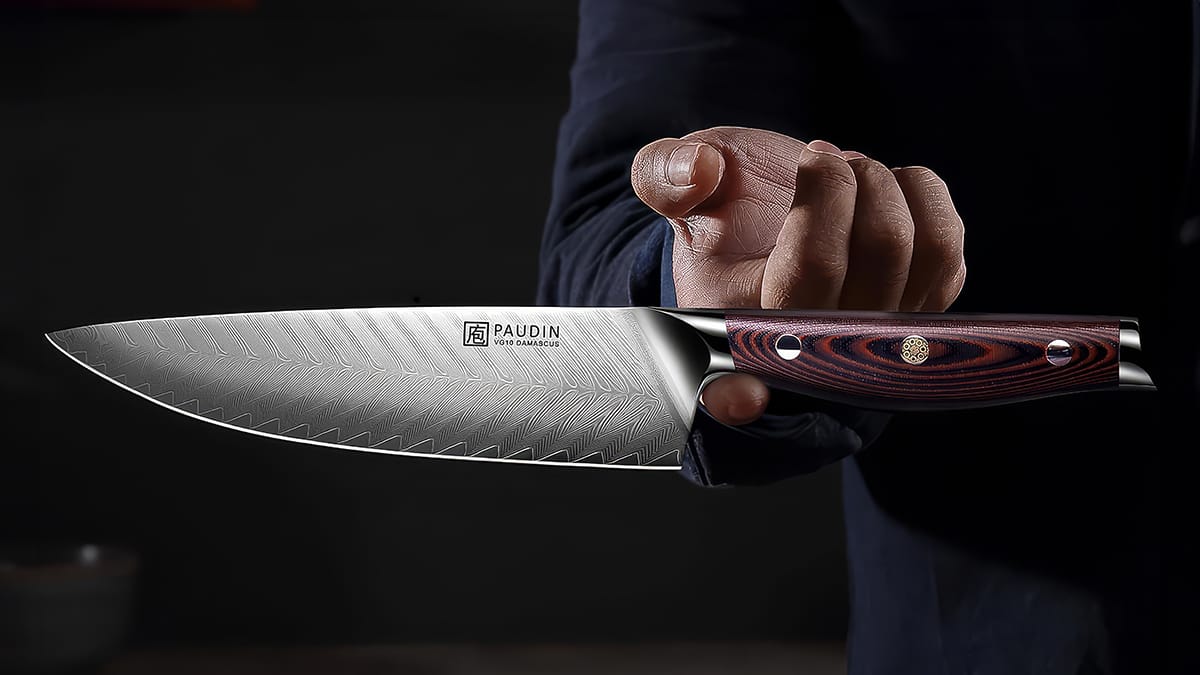
A full tang kitchen knife is a knife where the metal blade extends through the entire length of the handle. This single piece of metal, known as the tang, runs from the tip of the blade to the butt of the handle, providing a solid, continuous structure throughout the entire knife.
To identify a full tang knife, look for these characteristics:
- Visible metal along the sides of the handle
- A metal butt cap at the end of the handle
- Rivets or pins securing the handle scales to the tang
Different Types of Tang Construction
While full tang is often considered the gold standard, there are several other tang designs used in kitchen knives. Let’s explore each type:
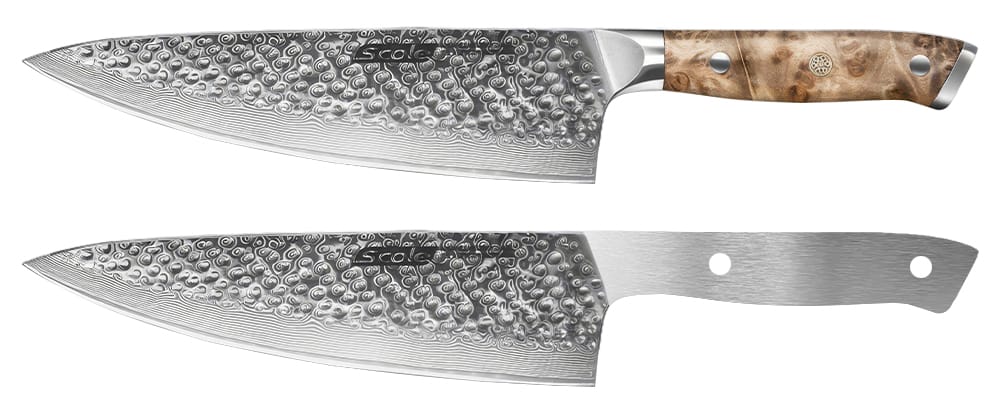
Full Tang Construction
As mentioned earlier, full tang knives feature a blade that extends through the entire handle. This design offers superior balance, durability, and control. Full tang knives are often preferred by professional chefs and serious home cooks for their reliability and performance.
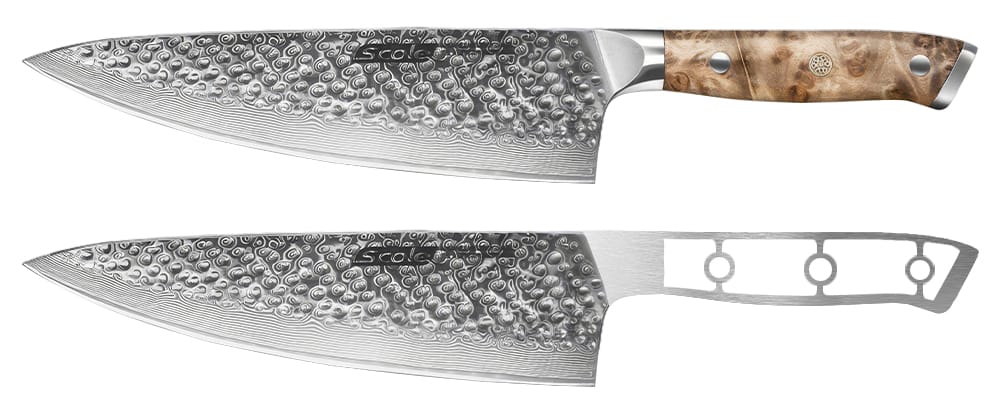
Skeletonized Tang
A skeletonized tang is a unique knife construction where portions of the tang are removed or “skeletonized” to reduce weight while maintaining structural integrity.
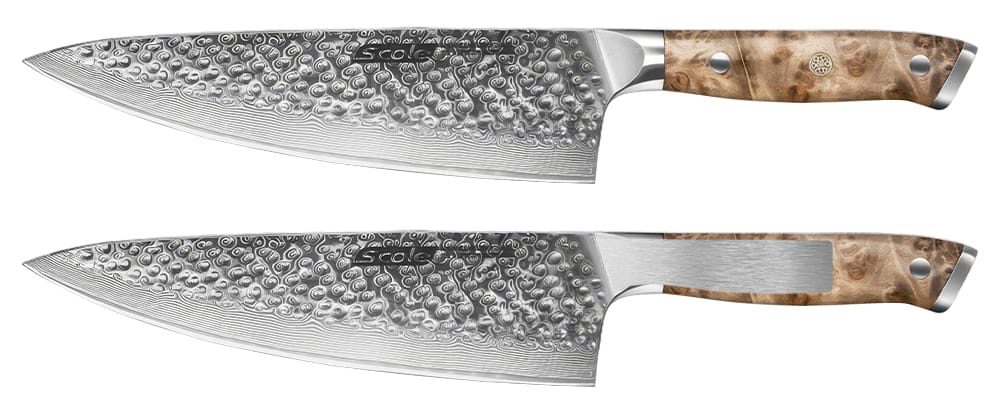
Partial Tang
Partial tang knives have a tang that only extends partway into the handle. This design is less durable than full tang but can result in a lighter knife. Partial tang knives are often found in budget-friendly options or specialized knives where weight is a primary concern.
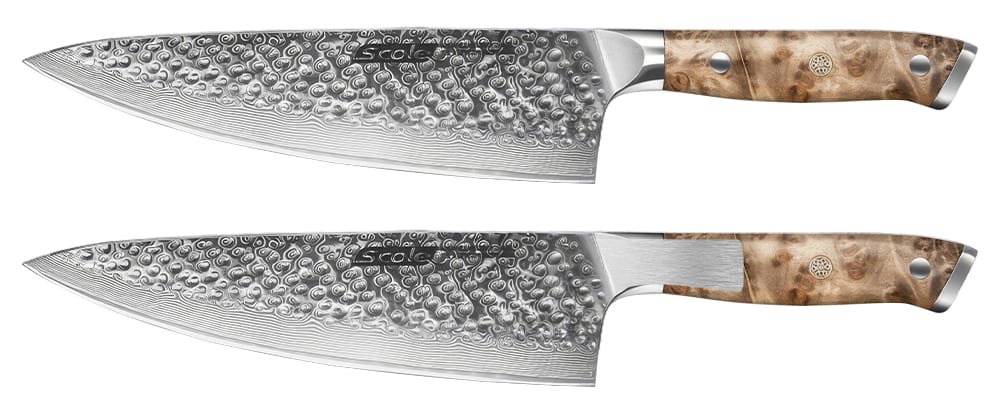
Push Tang
Push tang knives have a short tang that is inserted or “pushed” into the handle and secured with adhesive. This design is often found in cheaper knives and is generally considered the least durable option.
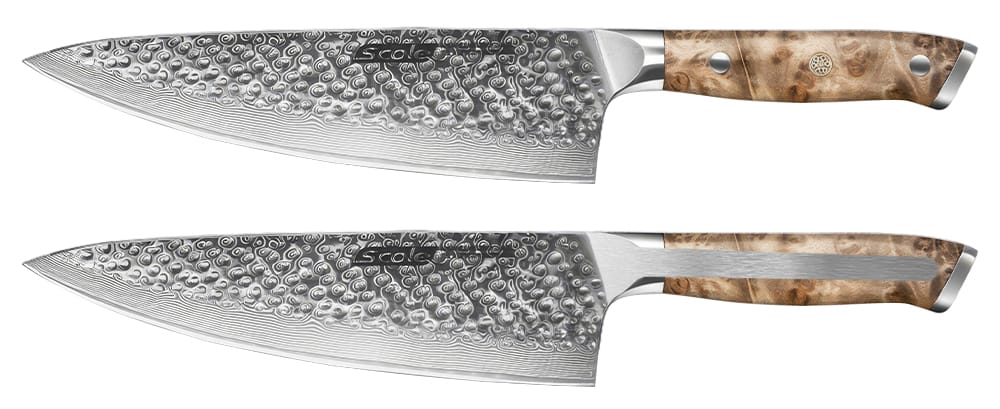
Hidden Tang
Hidden tang knives have a tang that extends through the handle but is completely covered by the handle material. This design can create a sleek, seamless look but may not offer the same level of durability as a full tang.
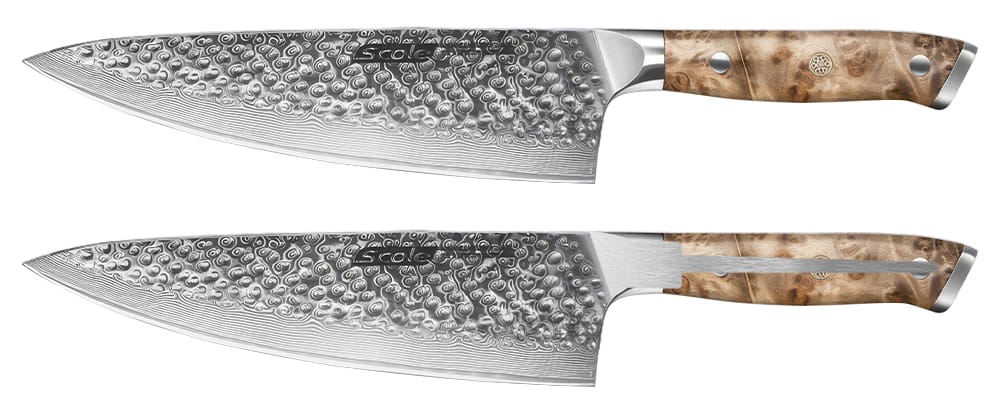
Rat Tail Tang
A rat tail tang is a thin tang that extends through the entire handle but is significantly narrower than the blade. This design allows for a lighter knife but sacrifices some of the strength and durability of a full tang.
Benefits of Full Tang Kitchen Knives
Full tang kitchen knives offer several advantages over other tang designs:
- Superior Balance and Control: The weight distribution in full tang knives provides excellent balance, allowing for more precise cuts and reduced hand fatigue during extended use.
- Enhanced Durability: The continuous metal structure makes full tang knives incredibly strong and resistant to breaking or bending, even under heavy use.
- Better Safety Features: The solid construction reduces the risk of the blade separating from the handle, making full tang knives a safer option in the kitchen.
- Improved Performance: The stability of full tang knives allows for more efficient energy transfer from your hand to the blade, resulting in cleaner cuts and better overall performance.
- Long-term Value: While often more expensive initially, full tang knives tend to last longer, providing better value over time.
Common myths about full tang kitchen knives:
- Myth: All expensive kitchen knives are full tang. Reality: While many high-end knives are full tang, price alone doesn’t guarantee full tang construction. Always check the specifications.
- Myth: Full tang knives are too heavy for delicate work. Reality: While generally heavier than partial tang knives, many full tang knives are well-balanced and suitable for precise tasks.
- Myth: Full tang knives never need sharpening. Reality: All knives, including full tang, require regular sharpening to maintain their edge.
For more information on knife performance and techniques, check out our guide on finding the best angle for your kitchen knife.
Full Tang vs. Partial Tang Kitchen Knives
To better understand the differences between full tang and partial tang knives, let’s compare them across several factors:
| Factor | Full Tang | Partial Tang |
|---|---|---|
| Construction | Blade extends through entire handle | Blade extends partially into handle |
| Balance | Excellent | Variable |
| Durability | High | Moderate to Low |
| Weight | Heavier | Lighter |
| Price | Higher | Lower |
| Best Uses | All-purpose & Heavy-duty | Light tasks only |
While full tang knives excel in most categories, partial tang knives can still be suitable for certain applications, especially when weight is a primary concern.
How to Identify a Full Tang Kitchen Knife
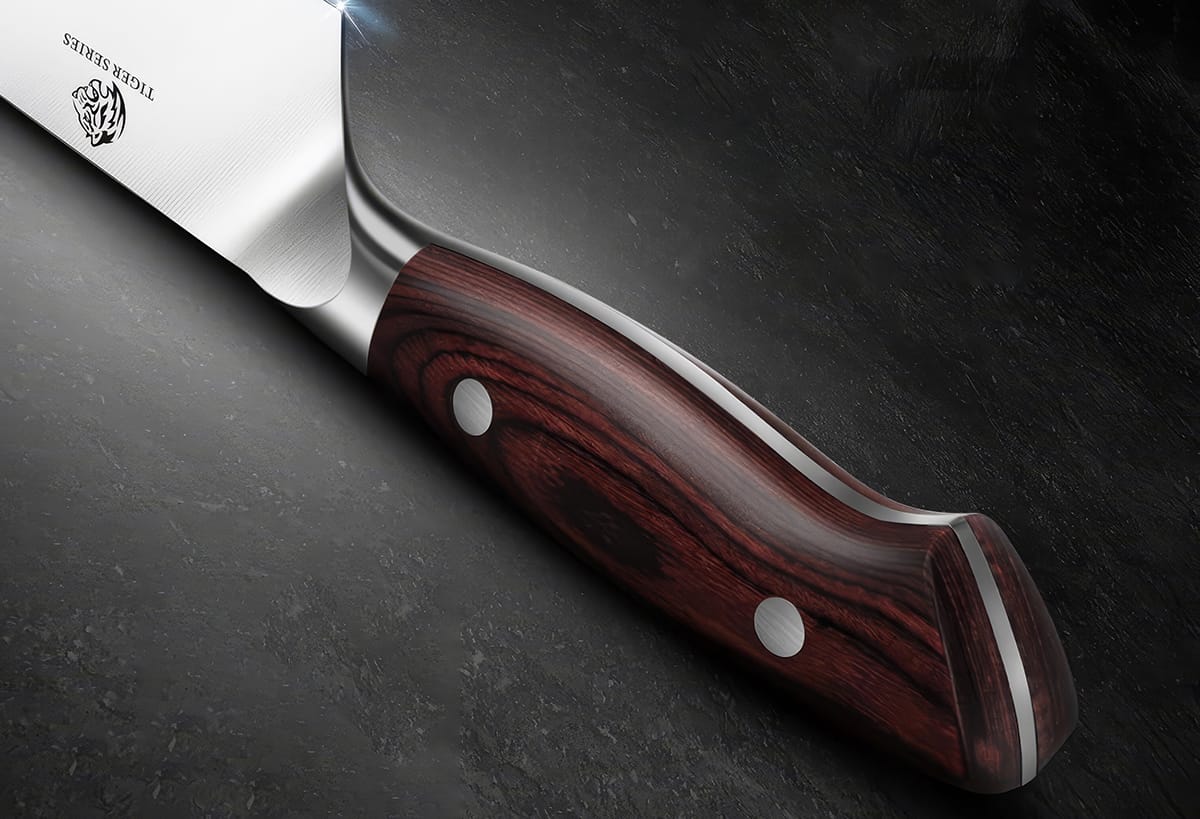
- Visual Inspection: Look for visible metal along the sides of the handle and at the butt of the knife.
- Material Considerations: High-quality full tang knives often use premium materials like high-carbon stainless steel for the blade and durable woods or synthetic materials for the handle.
- Construction Features: Check for secure rivets or pins holding the handle scales to the tang.

- Red Flags: Be wary of knives with plastic handles that claim to be full tang, as these are often partial tang knives in disguise.
For those on a budget, you can still find quality knives without breaking the bank. Check out our list of the 10 best kitchen knives under $50 for affordable options.
Popular Full Tang Kitchen Knife Models
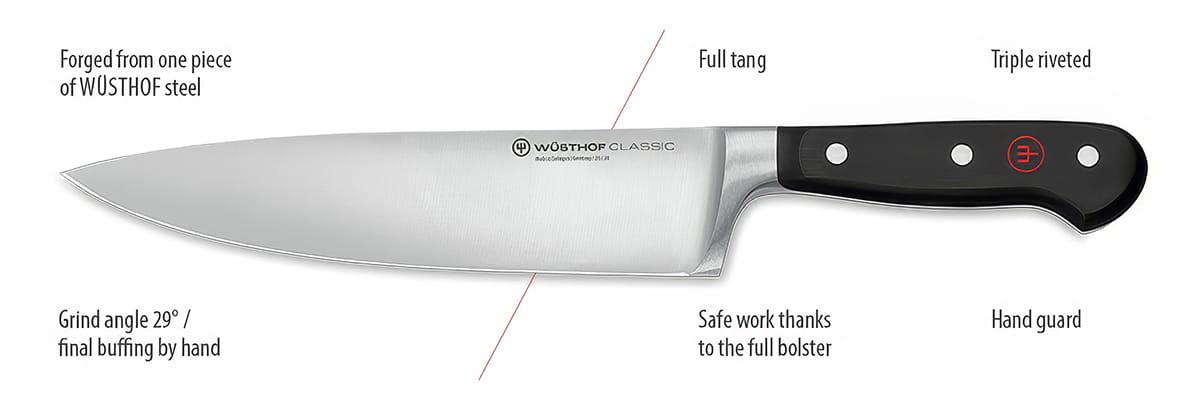
When it comes to full tang kitchen knives, several brands stand out for their quality and craftsmanship:
- Professional-Grade Options:
- Mid-Range Choices:
- Budget-Friendly Selections:
For those interested in exploring Japanese knife options, our guide on basic Japanese kitchen knives provides valuable insights into these precision tools.
Is a Full Tang Kitchen Knife Worth the Investment?
Yes, a full tang kitchen knife is absolutely worth the investment for most home cooks and professional chefs. Here’s a comprehensive analysis of why investing in a full tang knife makes financial and practical sense:
| Investment Factor | Full Tang Knife | Partial Tang/Budget Knife |
|---|---|---|
| Initial Cost | $100-300 | $20-50 |
| Average Lifespan | 15-25 years | 2-5 years |
| Maintenance Cost | Lower | Higher |
| Performance Value | Excellent | Fair to Good |
| Resale Value | Maintains value | Minimal to none |
Long-Term Investment Calculation:
Full Tang Knife:
$200 (initial cost) + $50 (maintenance over 20 years) = $250
$250 ÷ 20 years = $12.50 per year
vs.
Budget Knife:
$30 (initial cost) × 8 replacements = $240 + $80 (maintenance over 20 years) = $320
$320 ÷ 20 years = $16 per year
Key Benefits That Justify the Investment
- Superior Durability
- Resistant to breaking and bending
- Handles heavy-duty cutting tasks
- Withstands daily use and abuse
- Minimal risk of blade separation
- Enhanced Performance
- Better balance for precise cuts
- Reduced hand fatigue
- More consistent cutting results
- Maintains proper knife angle longer
- Long-Term Cost Effectiveness
- Fewer replacements needed
- Less frequent sharpening required
- Lower maintenance costs
- Better value retention
“A quality full tang knife is like a lifetime partnership in your kitchen. The initial investment might seem high, but when you consider the decades of reliable service, it’s actually one of the most cost-effective kitchen tools you can buy.” – Chef Michael Robertson
FAQs
Are all expensive kitchen knives full tang?
No, not all expensive knives are full tang. Always check the specifications or ask the seller to confirm the tang construction.
Can full tang knives break?
While extremely durable, full tang knives can break under extreme stress or misuse. However, they are much less likely to break than partial tang knives.
How long do full tang knives last?
With proper care and maintenance, a high-quality full tang knife can last for decades or even a lifetime.
Are full tang knives worth the extra cost?
For serious cooks and professionals, the improved durability, balance, and performance of full tang knives often justify the higher price.
Can you sharpen full tang knives differently than partial tang?
The sharpening process is generally the same for both full and partial tang knives. The tang construction doesn’t affect the blade’s edge.
Conclusion
Full tang kitchen knives offer superior durability, balance, and performance compared to other tang designs. While they may require a larger initial investment, their longevity and quality make them an excellent choice for serious cooks and professionals. By understanding the construction, benefits, and care requirements of full tang knives, you can make an informed decision when choosing the right knife for your kitchen.
For more information on kitchen knives and culinary tools, visit World Kitchen Tools and explore our comprehensive guides and reviews.

